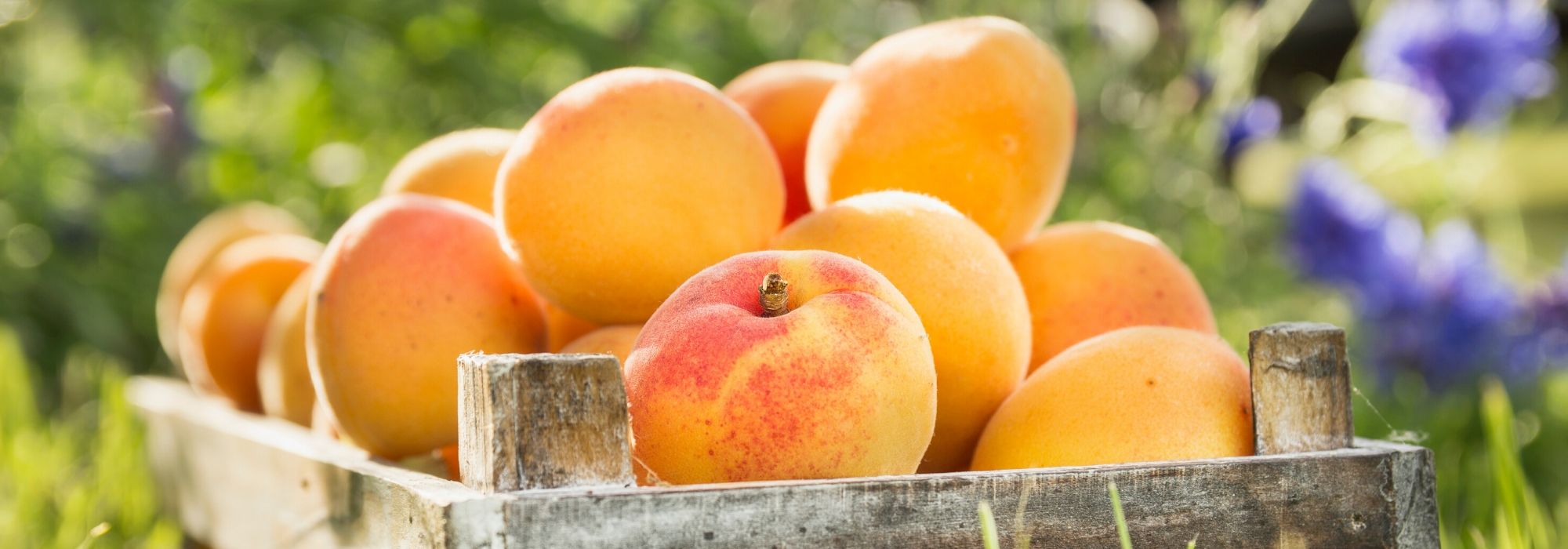
Apricot tree: planting, pruning, care
Contents
Apricot tree in a nutshell
- Apricot tree (Prunus armeniaca) is a fruit tree grown for its velvety-skinned fruit: apricot
- It is one of the first fruit trees to flower in spring
- Its orange flesh is juicy and has a slightly tangy flavour
- Vigorous and hardy, it will produce many fruits but expect to wait at least three to four years
- It prefers sunny, warm, sheltered positions to ripen its fruit well
A word from our expert
Apricot tree is an easy-to-grow fruit tree for garden, orchard and even, for some varieties such as ‘Garden Aprigold’, a dwarf Prunus armeniaca grown in a pot on terrace or balcony.
Delicate flowering, sensitive to frosts, brightens gardens early in spring and gives way to fruits with velvety skin and sweet, slightly tangy flesh. Alongside the famous apricot tree ‘Bergeron’, there are varieties just as cold-hardy such as the ‘Polonais‘ apricot or the ‘Luizet’ apricot, which can be planted throughout France.
Il est résistant à la sécheresse et only requires a sunny spot sheltered from cold winds in cooler regions and well-drained soil.
Discover our tips to plant it correctly, care for it and how to prune a young apricot tree!
Description and botany
Botanical data
- Latin name Prunus armeniaca
- Family Rosaceae
- Common name Apricot tree
- Flowering March to April
- Height 1 to 8 m
- Exposure Sun
- Soil type rich, light
- Hardiness -10°C to 25°C
Apricot tree (Prunus armeniaca) is a fruit tree of family Rosaceae like almond or peach, native to Central and East Asia, more precisely China where it has been cultivated since 3000 BC. It was introduced into Mediterranean basin, notably Armenia, and later to France in the 16th century.
There are about 350 species in genus Prunus, including plums, peach and Japanese cherries, and Prunus armeniaca, from which many varieties of apricot trees with varying precocity have been selected. Alongside well-known apricot ‘Bergeron’, very good quality fruit is produced by apricot ‘Rouge du Roussillon’, ‘Polonais’ or ‘Précoce de Saumur’.
Apricot tree forms an attractive tree with reddish bark and a fine, very ramified, elegant silhouette. Its oval to rounded habit spreads naturally with age. It has decorative bark, smooth and marked with lenticels or horizontal striations. Apricot tree rarely exceeds 6 m in height, with a spread of about 3 m. There are even dwarf apricot trees (‘Garden Aprigold’) that do not exceed 1 m and are perfectly suited to container growing on terraces and balconies. This fruit tree has a good longevity of around 40 to 45 years.
Apricot tree develops a fairly open branching. On dark red shoots growing vertically or horizontally, knotted twigs develop bearing deciduous foliage.

Prunus armeniaca – illustration by P.J. Redouté
Leaves are alternate, fairly broad, oval to elliptical or heart-shaped, measuring 6 to 12 cm long, and appear in spring. Attached by a long reddish petiole, they are crenate and irregularly dentate on the margins with a glossy lamina and conspicuous veins. From a sublime bronze at bud burst period, then green in spring, leaves sometimes take a rich red colour in autumn depending on variety.
Apricot tree flowers from early spring, usually before the leaves, sometimes at the same time, from March for the earliest cultivars (apricot ‘Muscat de Nancy’). It is one of the first flowerings of the year alongside almond blossom. Late varieties such as ‘Tardif de Tain’ or ‘Orange Summer®’ flower rather in April. This delicate flowering is particularly sensitive to spring frosts and is short-lived.
Many small typical rosaceae flowers, white or pale pink, 3 to 4 cm wide, appear solitary at the tips of one-year-old shoots. Flowers have 5 petals surrounded by reddish-purple oval sepals. They are elegant and bear clearly visible stamens at the centre.
Fragrant and nectariferous, they are pollinated by insects. Most apricot varieties are self-fertile, so another apricot tree nearby is not necessary for good fruit set. An apricot tree starts to bear 3 to 4 years after planting and reaches full maturity at 7 years.
Flowers are followed by fruit formation – the apricots – sometimes as early as late June for the earliest varieties such as ‘Précoce de Saumur’ and up to late August or early September for mid-late or late varieties.
Many fruits of rounded oblong shape about 4.5 to 7 cm in diameter with velvety skin develop. Apricots vary in size and colour according to variety. The soft skin is usually a fine uniform orange, sometimes blushed with red. Some varieties produce bright red fruit (Sunrosso® apricot). The yellow-orange, melting, sweet and fragrant flesh encloses a flattened, rough stone containing an edible obovate almond with sweet or bitter flavour. These fleshy fruits weigh about 60 g, are more or less juicy depending on variety and have a slightly tangy taste.
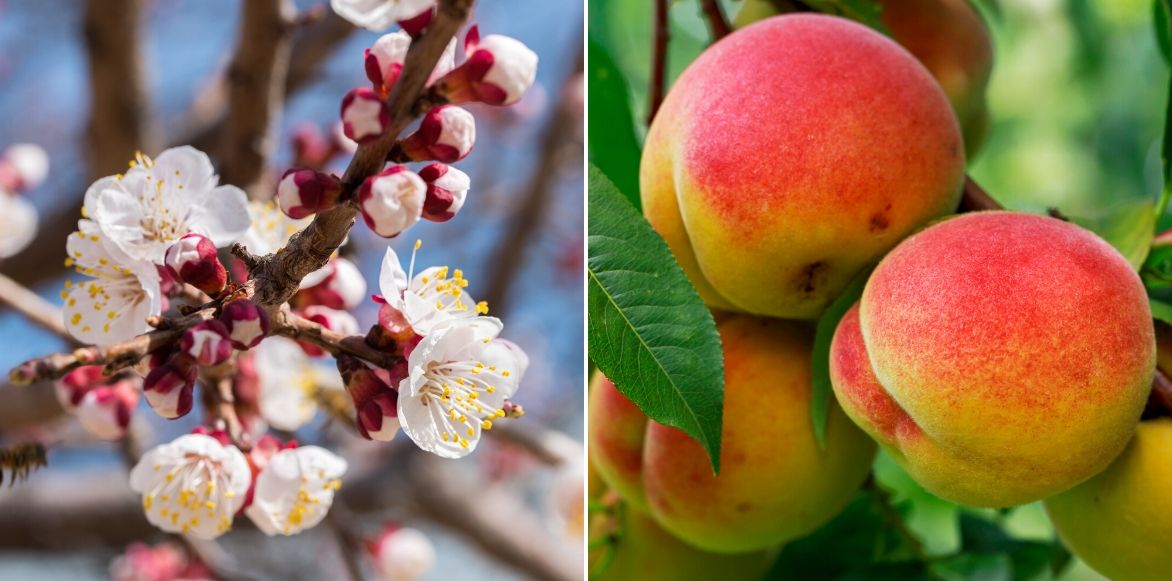
Flowers and fruit of apricot tree
Apricot tree is hardy to about -20 °C, but its flowering is sensitive to frost, so cultivation is easier in southern climates. It can be planted north of the Loire sheltered by a wall for example because it requires a sunny exposure and must be protected from cold winds. Undemanding regarding soil type, this fruit tree prefers a light, well-drained soil as it does not tolerate heavy, waterlogged soils.
It can be planted in an orchard but also in an ornamental garden, thanks to its beautiful spring flowering.
Read also
Fruit trees: pruning of a young shootMain species and varieties
Choosing an apricot tree variety depends on several criteria: earliness of flowering and harvest (which vary by region), flavour, and fruit size or quality. Apart from a few exceptions, most apricot tree varieties are self-fertile.
Although apricot trees are very hardy, early-flowering varieties are particularly vulnerable to spring frosts. If you live north of the Loire, opt for a late-flowering or very cold-resistant variety such as apricot tree ‘Polonais’. Some varieties produce apricots of excellent eating quality, others yield less sweet fruits better reserved for jam-making.
Early varieties

Prunus armeniaca Early Saumur - Apricot Tree
- Flowering time April
- Height at maturity 5 m

Prunus armeniaca Muscat de Nancy - Apricot Tree
- Flowering time April, May
- Height at maturity 7 m
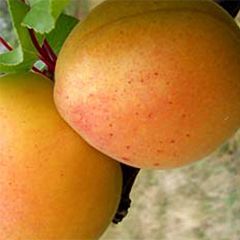
Prunus armeniaca Canino Apricot Tree - Prunus armeniaca
- Flowering time April
- Height at maturity 4 m
Semi-late and late varieties
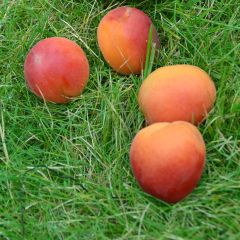
Prunus armeniaca Rouge du Roussillon - Georges Delbard
- Flowering time April
- Height at maturity 4 m
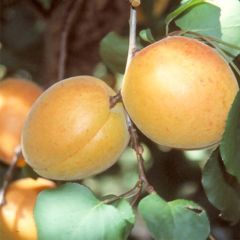
Prunus armeniaca Luizet - Apricot Tree
- Flowering time April, May
- Height at maturity 4 m
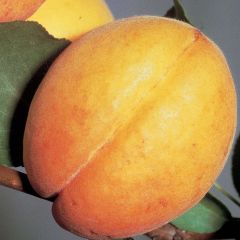
Prunus armeniaca Doucoeur - Apricot Tree
- Flowering time April
- Height at maturity 4 m
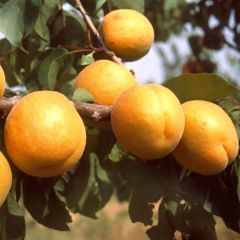
Prunus armeniaca Bergeron Apricot Tree - Prunus armeniaca
- Flowering time April, May
- Height at maturity 5 m
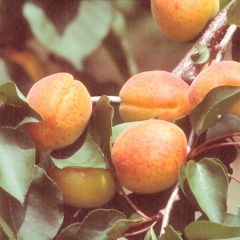
Prunus armeniaca Rouge du Roussillon - Apricot Tree
- Flowering time April, May
- Height at maturity 4 m
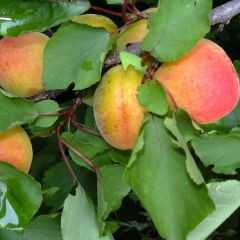
Prunus armeniaca Polonais - Apricot Tree
- Flowering time April, May
- Height at maturity 4 m
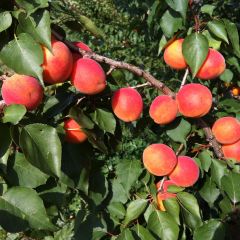
Prunus armeniaca Orange Summer - Apricot Tree
- Flowering time April, May
- Height at maturity 4 m
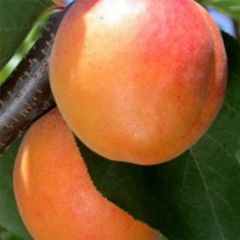
Prunus armeniaca Tardif de Tain Apricot Tree
- Flowering time April, May
- Height at maturity 4 m
Other interesting varieties
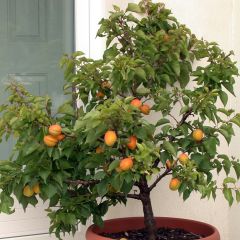
Prunus armeniaca Garden Aprigold - Apricot Tree
- Flowering time April, May
- Height at maturity 1 m
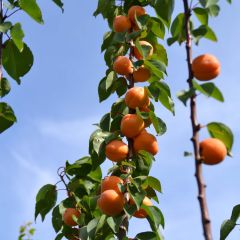
Prunus armeniaca Rustique Des Pyrénées - Apricot Tree
- Flowering time April
- Height at maturity 4 m
Discover other Apricot trees
View all →Available in 1 sizes
Available in 5 sizes
Available in 4 sizes
Available in 1 sizes
Available in 5 sizes
Available in 2 sizes
Available in 4 sizes
Available in 2 sizes
Available in 1 sizes
Available in 5 sizes
Planting
Where to plant apricot tree?
Very hardy down to -20–25 °C, apricot tree can acclimatise throughout France provided you choose the right variety and give it a sunny, well‑sheltered spot. It is a fruit tree that grows better in warm climates. In cold regions, choose a south‑facing position sheltered from northerly and easterly winds, as these can damage flowering of the earliest varieties. Its flowers are sensitive to spring frosts and will be destroyed at -2 °C. In less favourable areas, we strongly recommend choosing late‑flowering or very hardy varieties, to prevent late‑winter frosts from jeopardising fruiting, and to train them against a sunlit wall which will help protect the tree from cold.
Apricot tree adapts to many soil types, except clayey or wet soils, preferring well‑drained, rich and light soil. It has a preference for neutral or slightly calcareous ground. Apricot tree dislikes stagnant moisture, which favours the development of diseases.
It naturally finds its place in an orchard but also in an ornamental garden thanks to its slender habit and delicate flowering. It can be trained as open‑grown forms (standard, half‑standard, low goblet) or as an espalier (palmettes), giving you many options depending on garden size.
If you only have a well‑exposed terrace or balcony, there are dwarf species that can be grown in a pot such as the dwarf apricot tree ‘Garden Aprigold’.
When to plant apricot tree?
Planting is preferably carried out just before winter, from October to November, when tree is dormant, or failing that in spring with regular watering, in any case outside periods of frost.
How to plant?
In open ground
If you want to plant several apricot trees, space plants at least 4 to 6 m apart. Remember to choose different varieties to stagger your harvests. If your soil is too heavy, improve drainage if necessary (gravel, compost) or plant on a raised bed where water will run off easily.
- dig a hole twice as wide and deep as the pot, roughly 80 cm in diameter and depth;
- place the rootball to soak in a basin of water;
- lay a drainage layer at the bottom (especially if your soil is heavy or clayey), using gravel;
- add some well‑rotted compost to the bottom of the hole;
- position the rootball and completely cover it with garden soil mixed with potting compost;
- install a stake and firm the soil around the base;
- water abundantly to encourage establishment and be vigilant during the first year, watering regularly so the soil remains moist.
In a pot
If you want to grow an apricot tree in a pot, choose a large enough container and a dwarf variety.
- place a layer of gravel at the bottom of the pot;
- plant in a mix of potting compost, garden soil and a little sand;
- water.
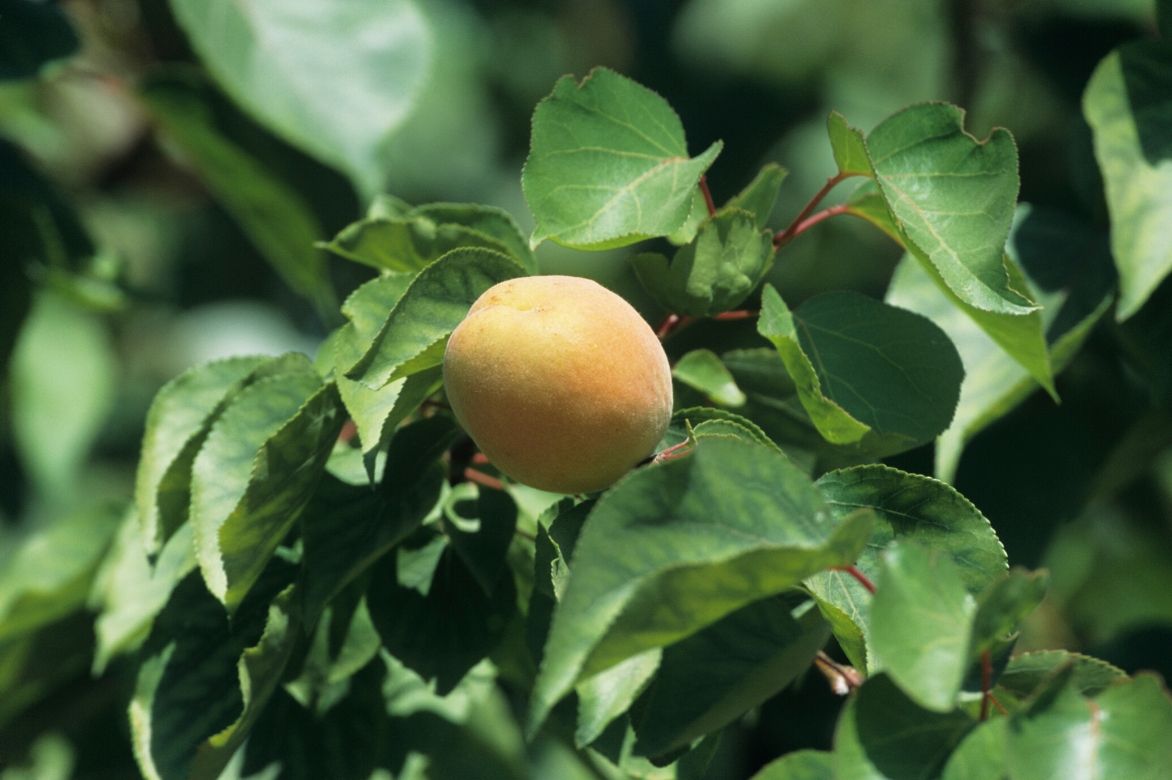
Pruning and caring for apricot trees
When and how to prune apricot tree?
Pruning is not obligatory; it is simply recommended to improve fruiting, limit height and rebalance habit. Pruning can also be useful if you want to espalier apricot tree. This fruit tree is suitable for all common training forms: cordons, palmettes, goblets, half-standard and low-standard. Beware apricot tree does not tolerate severe pruning and large pruning wounds well: prune with a well-sharpened, thoroughly cleaned pruning shear and cover wounds with a healing putty to prevent disease.
Formative pruning
During first years, prune to remove poorly placed and weak branches so as to keep only strong structural branches.
Goblet pruning
Goblet pruning makes fruit picking easier: cut the leading shoot and, over successive winters, arrange 5 to 6 main branches evenly around the trunk.
→ read, on the subject: “How to train a fruit tree into a goblet shape?”
Fruiting pruning
Its purpose is to increase branching. Every year in February–March:
- remove dead wood and damaged or broken branches;
- shorten the tip of most shoots above a bud, keeping at least 3 buds to encourage branching;
- remove branches that cross or those growing towards centre of tree to thin out branches;
- remove suckers (shoots that bear only wood buds and are branched at tip) by cutting them close to main branch;
- in early June, when young fruits start to form: remove excess or undersized fruits. This thinning results in larger fruits. Learn more in our tutorial Why and how to thin fruit trees?
Green pruning
Just after fruit harvest, once leaves have fallen, slightly reduce shoots that have borne fruit.
Rejuvenation pruning
About every 5 years, give tree a new lease of life by reducing largest branches by half and shortening remaining ones.
Maintenance
Once well established in free-draining soil, like many fruit trees, apricot tree will require some attention.
Water during first year after planting, allowing soil to dry out between waterings; once well rooted after two or three years of cultivation, water only during prolonged hot spells. It does not require much water.
In early spring, apply well-rotted compost by surface fork-over, taking care not to damage roots.
If late frosts are forecast in exposed areas, protect flower buds with a frost protection fleece.
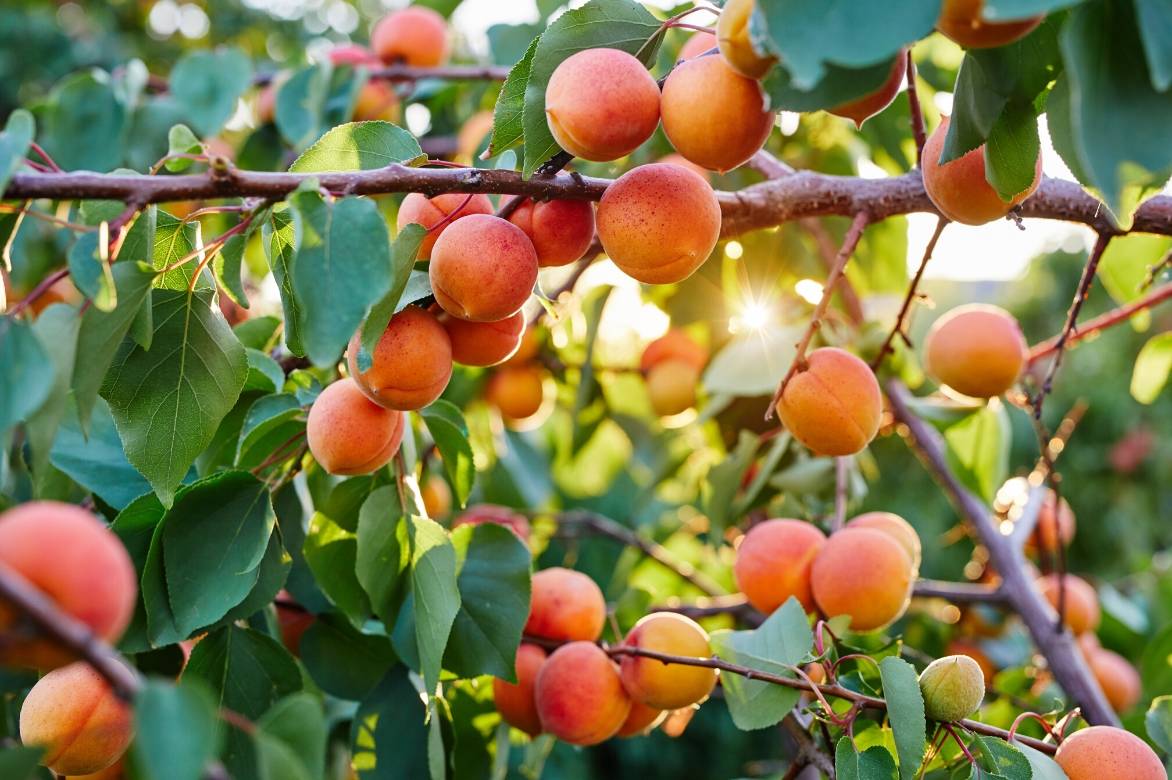
Apricot tree diseases
Very common on peach trees, peach leaf curl also affects apricot trees. This fungus causes significant damage to leaves which become curled, twists young shoots and sometimes even affects fruit. Discover our advice to prevent establishment or limit consequences of peach leaf curl.
Against fungal diseases (powdery mildew, brown rot) treat tree preventively in spring with sprays of Bordeaux mixture.
Gum exudation or gummosis (thick, sticky substance) is common on apricot tree bark: it is a sign that your apricot tree is not happy where it stands (excess moisture in soil, fertilisation defects…). Prune out diseased parts and seal wounds with a healing mastic and add compost worked into soil at the base, in spring and autumn.
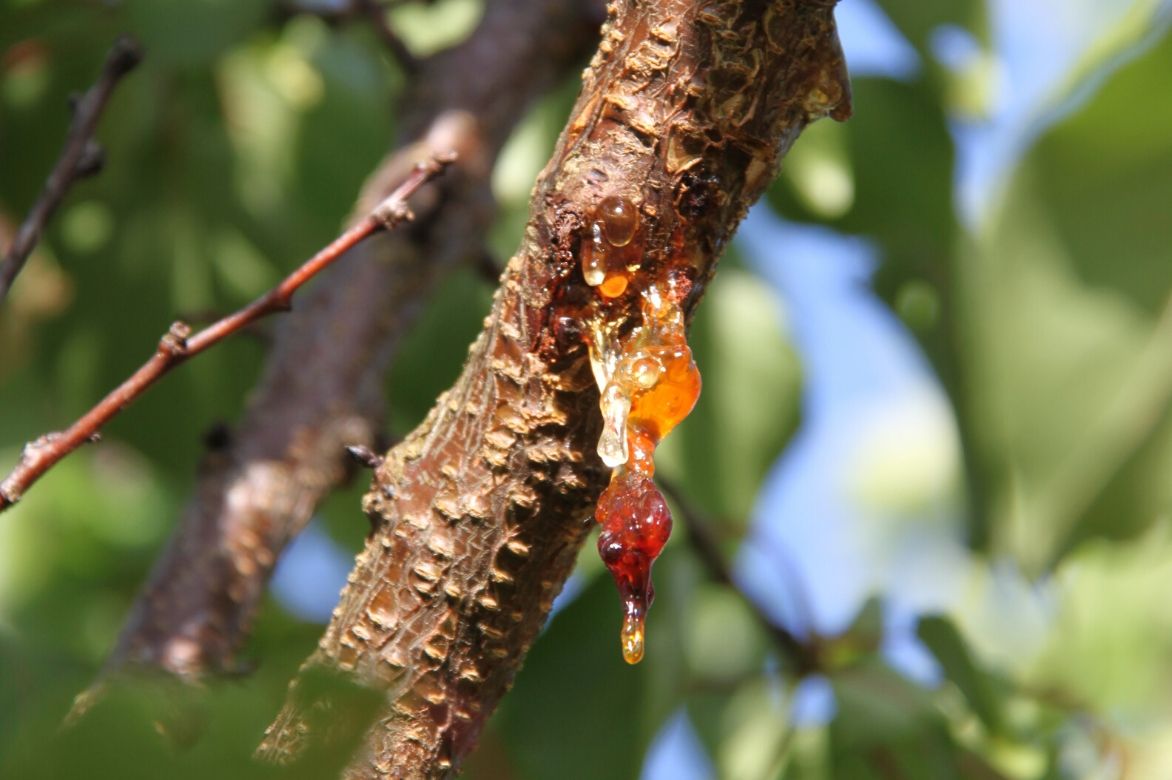
Gum exudation on apricot tree
Keep an eye out because apricot tree is also susceptible to bacterial canker, a disease fairly common among fruit trees, and to sharka virus, an incurable disease that affects stone fruit and causes discoloured rings on leaves, shoots and on apricots, leading to flesh deterioration.
Read also:How to combat the Mediterranean fruit fly?
When and how to harvest your apricots?
It will take 3 to 4 years to see an apricot tree bear fruit after planting. Apricot harvest runs from late May to early September depending on region and variety, when fruits have reached ripeness, have a rich golden colour, are soft to the touch, are easy to detach from the tree and before they become overripe. Apricots are simply harvested by hand. Yield is variable and can range from 30 to 50 kg of fruit per tree, depending on climate, age and whether your apricot tree has been correctly pruned or not.
How to store your apricots and use them?
Apricots can be eaten fresh, dried or prepared.
They are best eaten fresh soon after picking because they keep only a short time. You can pick them just before they reach ripeness, you can then keep them for 2–3 weeks in the crisper drawer of the fridge or by storing them on trays in a dry, cool, well‑ventilated room. You can also preserve them by freezing after pitting or by drying them: discover how to dry your apricots!
Eaten fresh, they are delicious as juice, enhance a fruit salad or accompany cheeses. Cooked, they make delightful jams, marmalades, jelly and tarts, can be candied or enjoyed as apricot halves in syrup.
They also add a tangy note to savoury dishes, such as rabbit with apricots or tagines.
Apricots are rich in fibre, antioxidants, beta‑carotin, vitamins A and C and trace elements.
Propagation
Apricot tree is propagated by grafting in summer (shield graft called dormant eye). Common rootstocks: plum, seedling apricot, seedling peach or seedling almond. This operation is rather delicate for an amateur gardener and we recommend reserving it for professionals. However, it is perfectly possible to multiply apricot tree from its stone.
How to plant an apricot stone
To succeed with apricot sowing, stratify apricot stones to soften shell by cold and moisture in order to free seed from its hard casing.
Stratification
From November, in an unperforated container :
- spread a thick layer of clay pebbles;
- add sand to a depth of 3 to 5 cm;
- place a few stones spaced 3 cm apart;
- cover with a mixture of sand and potting compost and repeat the operation, placing stones in successive layers up to top of container, finishing with a layer of sand;
- water to keep constantly moist until following spring and store in a ventilated, unheated location.
Between February and March, recover stones that have germinated and plant them in buckets so they can root properly.
Choose most robust shoots to plant permanently in garden in spring when temperatures approach 20°C.
You can also carry out this stratification outdoors by proceeding identically in a clay pot with drainage holes placed for whole winter sheltered against a north-facing wall.
Useful resources
- Discover our wide range of apricot trees, available to order online
- All advice for to grow, protect and maintain your fruit trees is on our blog
- Discover top apricot varieties
- Discover hybridization of plum and apricot: the pluot! and best pluot varieties, the apricot-plum
- Find our advice on apricot tree diseases and parasitic pests
- Learn all about apricot trees with our complete buying guide to choosing an apricot tree
- Why is my apricot tree not fruiting? Causes and solutions
- Gwenaëlle tells origins and history of the apricot in: Where do our fruit trees come from?
- Subscribe!
- Contents
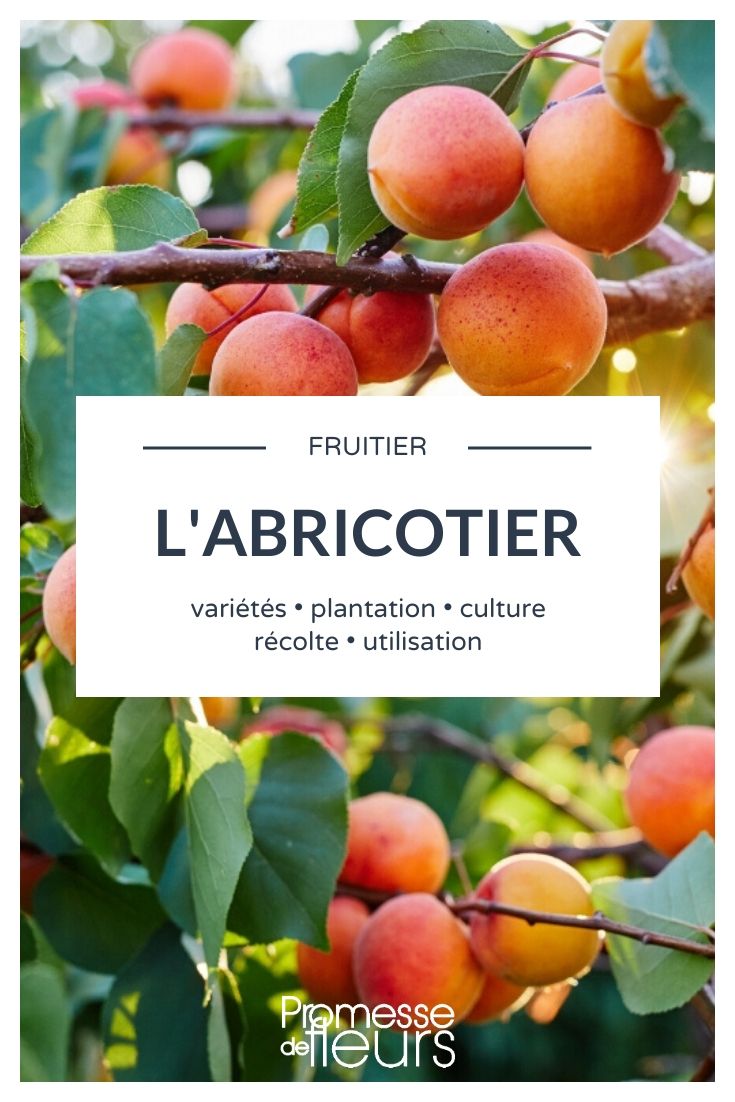

































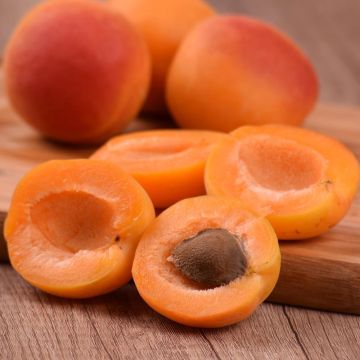
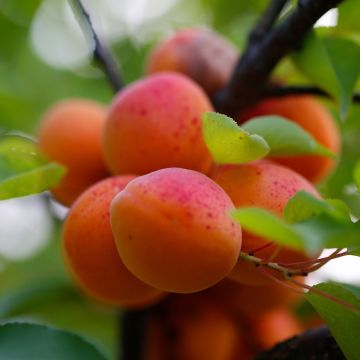

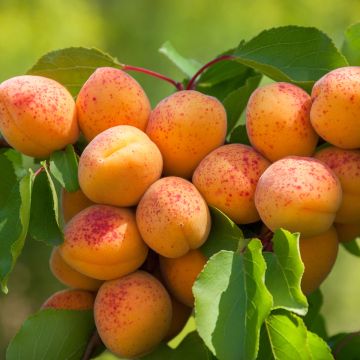
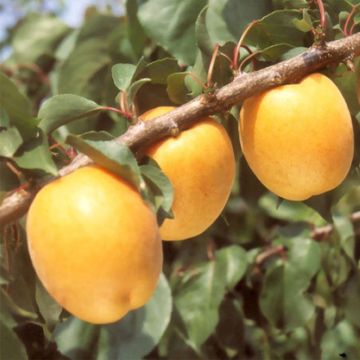


Comments